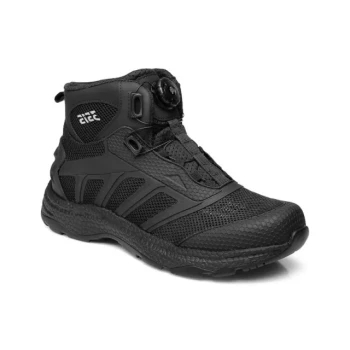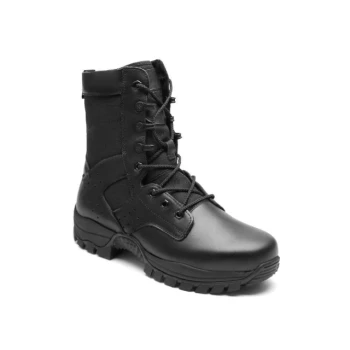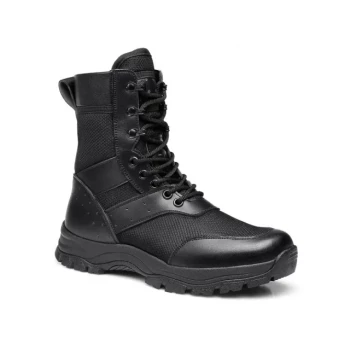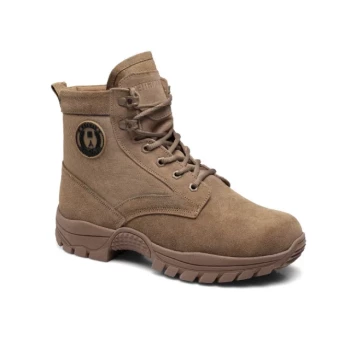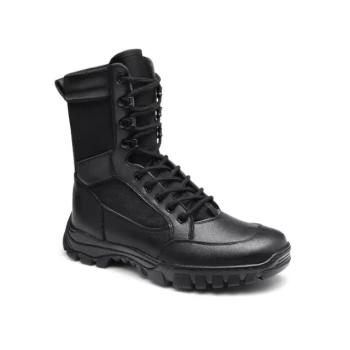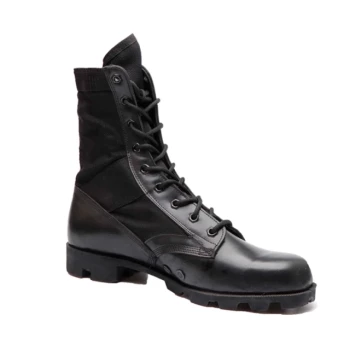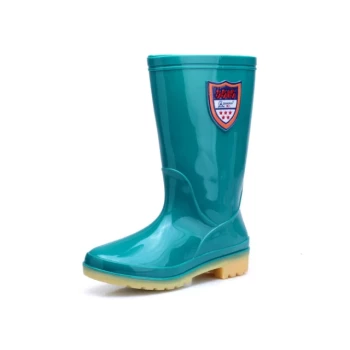At their core, tactical boots are categorized by the specific environment and mission for which they are designed. The main types include boots for general military and police duty, specialized designs for extreme climates like desert or jungle environments, and hybrid models engineered for hiking, running, or rapid response.
The most important takeaway is that there is no single "best" tactical boot. The right choice is always a direct function of your specific operational needs, balancing critical features like protection, weight, and environmental resistance.

Deconstructing the Tactical Boot: Core Features
Before comparing different types, it's essential to understand the fundamental components that define a tactical boot. Each feature represents a deliberate design choice intended to enhance performance in demanding situations.
The Foundation: Durability and Protection
A tactical boot's primary job is to protect your feet. This is achieved through rugged upper construction, often using materials like full-grain leather, synthetic leather, or durable nylon fabrics to resist abrasion and impact.
The Engine: Support and Stability
Long periods of standing, running, or carrying heavy loads require significant support. Tactical boots feature reinforced ankle support, cushioned insoles, and shock-absorbing midsoles to reduce fatigue and prevent injury.
The Interface: Traction and Grip
Performance depends on a secure connection to the ground. Tactical boots use aggressive, multi-directional lug patterns on their outsoles, engineered to provide superior grip on varied and unpredictable surfaces, from wet pavement to loose gravel.
The Differentiator: Weight and Mobility
Modern tactical boots prioritize lightweight construction to enhance speed and reduce fatigue. The use of synthetic materials like nylon and advanced composites allows for a boot that is both durable and agile, with increased flexibility for a wider range of motion.
Environmental Control: Breathability and Water Resistance
Managing moisture is critical for foot health and comfort. Many boots incorporate breathable mesh panels and moisture-wicking linings to keep feet cool and dry. Others offer full waterproof membranes for use in wet conditions.
Matching the Boot to the Mission: Key Categories
With a grasp of the core features, we can now explore how they are combined to create specialized boots for different applications. Each category prioritizes certain features to excel in its intended role.
For General Duty: Military and Police Boots
These are the workhorses of the tactical world. They are built to be all-around performers, emphasizing high durability, all-day support, and compliance with uniform regulations. They provide a solid baseline of protection and performance for varied, but not extreme, conditions.
For Extreme Climates: Desert and Jungle Boots
These boots are highly specialized for their environments. Desert boots prioritize breathability and sand resistance, often using lighter colors and materials like suede and nylon to vent heat effectively. Jungle boots are designed for hot, wet conditions, focusing on water drainage ports and quick-drying materials rather than waterproofing.
For Specialized Terrain: Tactical Hiking Boots
This category blends the rugged outsole and ankle support of a traditional hiking boot with the lighter weight and flexibility of a tactical boot. They are ideal for users who operate on steep, uneven, and natural terrain for extended periods.
For Speed and Agility: Lightweight and Running Boots
When rapid movement is the top priority, these boots excel. They heavily utilize synthetic materials, flexible soles, and often have a lower profile, resembling an athletic shoe. They sacrifice some long-term durability for maximum mobility and minimal weight.
For Convenience and First Responders: Side-Zip and EMS Boots
Designed for those who need to get their boots on and off quickly, side-zip boots offer a major convenience feature without compromising ankle support. EMS/EMT boots often include these features along with specific safety requirements like composite safety toes and ease of decontamination.
Understanding the Trade-offs
Choosing a tactical boot always involves compromise. Excelling in one area often means sacrificing performance in another. Understanding these trade-offs is crucial for making an informed decision.
Durability vs. Weight
A heavy, full-leather boot may offer maximum durability and protection, but it will also be heavier, leading to faster fatigue. A lightweight synthetic boot is more agile but may wear out sooner under harsh use.
Waterproofing vs. Breathability
A fully waterproof boot is excellent for keeping external water out, but it can trap sweat inside, especially in hot weather. In some climates, a non-waterproof but highly breathable, quick-drying boot is a more effective choice for keeping feet dry.
Protection vs. Flexibility
A stiff, highly supportive boot provides maximum protection against ankle rolls and impacts. However, this rigidity can limit the natural range of motion needed for running or climbing.
Making the Right Choice for Your Goal
Your mission dictates your gear. Use your primary activity as the filter to select the right category of tactical boot.
- If your primary focus is military or general field use: You need a boot that balances durability, support, and compliance with regulations.
- If your primary focus is law enforcement or urban duty: Look for a comfortable, supportive, and lightweight boot suitable for long shifts on hard surfaces.
- If your primary focus is speed and rapid response: A lightweight, athletic-style tactical boot made from synthetic materials is your best option.
- If your primary focus is hiking or use in rugged terrain: Choose a tactical hiking boot that blends trail-rated support with tactical agility.
- If your primary focus is a hot and dry climate: Select a desert boot designed for maximum breathability.
Ultimately, understanding your operational environment is the key to selecting the tactical boot that will perform as a reliable tool for your feet.
Summary Table:
| Mission / Use Case | Primary Boot Type | Key Features |
|---|---|---|
| General Military/Police Duty | All-Purpose Duty Boot | High durability, all-day support, uniform compliance |
| Hot & Dry Climates | Desert Boot | Maximum breathability, light colors, sand resistance |
| Hot & Wet Climates | Jungle Boot | Quick-drying materials, water drainage ports |
| Rugged Terrain & Hiking | Tactical Hiking Boot | Aggressive traction, ankle support, terrain-specific design |
| Speed & Rapid Response | Lightweight/Running Boot | Athletic shoe-like flexibility, minimal weight |
| Convenience & EMS | Side-Zip/EMS Boot | Easy on/off, composite safety toes, decontamination-friendly |
Ready to Equip Your Team with Mission-Ready Footwear?
As a large-scale manufacturer, 3515 produces a comprehensive range of tactical, safety, and occupational footwear for distributors, brand owners, and bulk clients. Our production capabilities encompass all types of boots, ensuring durability, support, and performance tailored to your specific operational needs.
We provide:
- Customization: Tailor designs, materials, and branding to your exact specifications.
- Quality & Compliance: Built to meet rigorous standards for demanding environments.
- Scalable Production: Reliable supply for large orders and ongoing partnerships.
Let's discuss how we can support your footwear requirements.
Contact our team today for quotes, catalogs, and custom project discussions.
Visual Guide
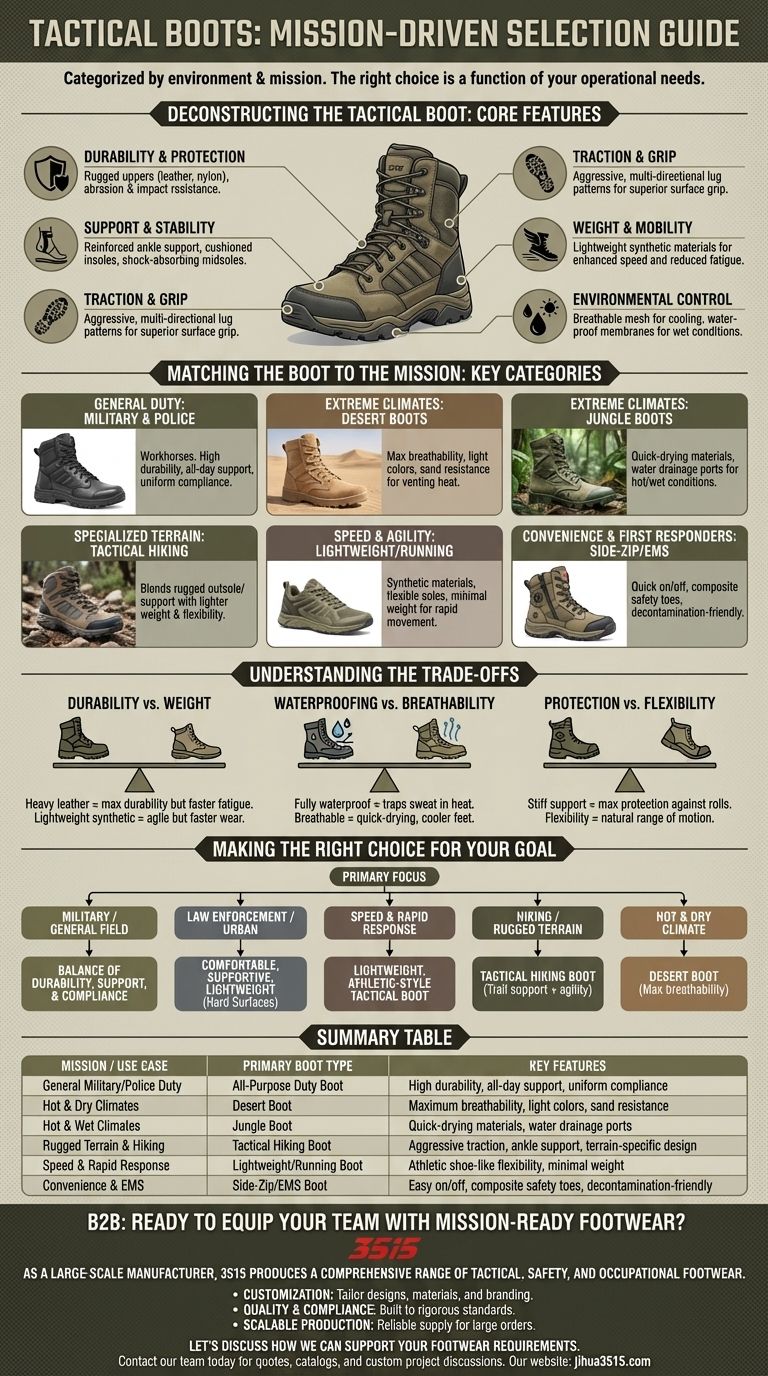
Related Products
- Wholesale Waterproof Tactical Boots Custom Suede & High-Traction Soles
- Wholesale Durable Mid-Cut Tactical Boots for Custom & Private Label Brands
- Wholesale Lightweight Tactical Boots with Dial Closure OEM & Bulk Orders
- Durable Mid-Cut Tactical Boots for Wholesale & Private Label
- Durable Leather Tactical Boots Wholesale & Custom Manufacturing for Brands
People Also Ask
- Why is waterproofing important for tactical boots? Protect Your Feet and Gear in Any Mission
- How do military camouflage boots protect against adverse weather? Ensuring Dry, Warm Feet in Any Condition
- How do uniform requirements influence the choice between tactical boots and sneakers? Select Compliant Footwear for Your Role
- What are the advantages and disadvantages of waterproof tactical boots? A Guide to the Key Trade-Offs
- What waterproof technology is used in tactical boots? Unlock All-Weather Performance & Protection


